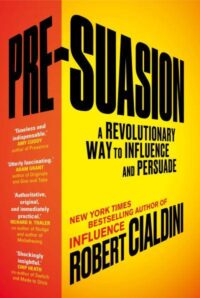Reading Notes for:


Shifting the Task at Hand
On March 20, 2003, President George W. Bush ordered an invasion of Iraq by US-led forces. After a series of rapid military strikes that crushed the government of Saddam Hussein, it eventuated in an extended, agonizing, and brutal slog that cost the United States dearly in blood, money, prestige, and global influence. The Bush administration’s initial justification for the war—to rid the region of Saddam’s cache of “weapons of mass destruction”—was debunked (the weapons never materialized) and was revised regularly to incorporate such new purposes as eliminating Saddam’s humanitarian abuses, terminating Iraq’s support of Al Qaeda, safeguarding the world’s oil supply, and establishing a bulwark for democracy in the Middle East. Nonetheless, the administration deflected attention from these questionable and shifting reasons through an ingenious media program—
The “embedded reporter program” of the war in Iraq was the product of a joint decision by US officials and major media bureau chiefs to place reporters directly within combat units—to eat, sleep, and travel with them—during the course of military operations.
Those human interest stories are also highly coveted by news media for their audience-drawing powers.
Also, the personal observations of journalists from around the world (nearly 40 percent of embedded slots went to non-US news agencies) provided an invaluable kind of risk protection to the military—from possible untruths about the war coming from Saddam’s government.
At an academic conference one year after the invasion, Colonel Rick Long, who was head of media relations for the US Marine Corps, was asked why the military advocated for the program. Indeed, 93 percent of all stories filed by embedded journalists came from the soldiers’ perspectives, compared with less than half of that from their unembedded counterparts.
Something crucial was lost, though, in this deepened but narrowed coverage: the embedded journalists—whose reports received an astonishing 71 percent of front-page war coverage during the conflict—were not reporting in any meaningful way on the broader political issues involved, such as the justifications for the war (as an example, the absence of weapons of mass destruction was mentioned in just 2 percent of all stories) or the operation’s impact on US standing and power abroad. How could we expect anything else of them? Their eager superiors assigned them to cover what one analysis termed “the minutiae of the conflict,” which absorbed all of their time, energy, and consideration.
Because frontline combat factors represented a prime strength of the war, whereas larger strategic ones represented a prime weakness, the effect of the embedded reporter program was to award center stage import to the main success, not the main failure, of the Bush administration’s Iraq campaign. The focusing illusion ensured it.
The stealthy impact of bringing selective attention to a favorable type of information is not limited to the beneficial shaping of an assigned task. As we’ve seen, the persuasive consequences of managing background information and inviting singular evaluation went unrecognized by individuals subjected to those procedures, too.
